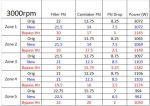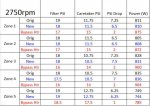I am thinking about a replumbing job to improve the pressure at my Caretaker valve so the filter is not overtaxed.
For example, at 3000 rpm I get about 7-8 psi loss between the filter and the Caretaker (twenties down to lower teens). On 1 or 2 stations, this still gives enough pressure to the pop-ups, but the other stations not enough. The pop-ups need 15-19psi at the Caretaker and 3 or 4 of the stations are below that at 3000 rpm.
I assume this is due to head loss. The equipment pad layout is not the most efficient, so water travels a little over 20 linear feet from filter output to the Caretaker. This is 2" pipe.
1. I want to install a heater bypass, but it only saves a little over 4 feet of travel, plus whatever distance it travels through the heater. Will that be worth it?
2. There are almost a dozen elbows and a few tees in this loop. Half of the elbows are hard 90s, including the last 3 within a few feet of the Caretaker. Is it worth is to swap those to sweep 90s?
For example, at 3000 rpm I get about 7-8 psi loss between the filter and the Caretaker (twenties down to lower teens). On 1 or 2 stations, this still gives enough pressure to the pop-ups, but the other stations not enough. The pop-ups need 15-19psi at the Caretaker and 3 or 4 of the stations are below that at 3000 rpm.
I assume this is due to head loss. The equipment pad layout is not the most efficient, so water travels a little over 20 linear feet from filter output to the Caretaker. This is 2" pipe.
1. I want to install a heater bypass, but it only saves a little over 4 feet of travel, plus whatever distance it travels through the heater. Will that be worth it?
2. There are almost a dozen elbows and a few tees in this loop. Half of the elbows are hard 90s, including the last 3 within a few feet of the Caretaker. Is it worth is to swap those to sweep 90s?
Last edited:



